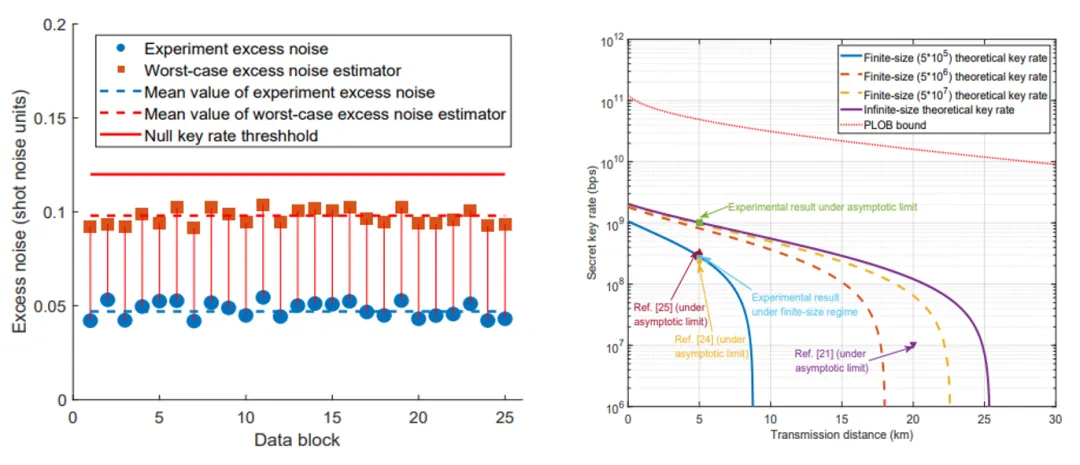- Home
- About Us
- Students
- Academics
-
Faculty
- Electrical Engineering
- Automation
- Computer Science & Engineering
- Electronic Engineering
- Instrument Science and Engineering
- Micro-Nano Electronics
- School of Software
- Academy of Information Technology and Electrical Engineering
- School of Cyber Security
- Electrical and Electronic Experimental Teaching Center
- Center for Advanced Electronic Materials and Devices
- Cooperative Medianet Innovation Center
- Alumni
-
Positions
-
Forum
News
- · Bin Dai's Team Unveils the Assembly Mechanism of β-Lactoglobulin Fibrils, Providing New Insights for the Development of Functional Nanomaterials
- · Mingyi Chen’s research group has made important progress in the field of analog-to-digital converter chips for brain-computer interface
- · Progress in the Development of Semiconductor Nanomaterials to Activate Pyroptosis for Cancer Therapy
- · Jiamiao Yang’s team achieved the high precision optoelectronic reservoir computing based on complex-value encoding
- · Significant Advancements in Resonator-Enhanced Quantum Sensing Achieved by Zenguihua's Team at the School of Sensing Science and Engineering
Professor Guihua Zeng's group from School of Electronic Information and Electrical Engineering have made important progess in the research of high-rate quantum key distribution
Recently, Professor Guihua Zeng and Associate Researcher Peng Huang from School of Electronic Information and Electrical Engineering (SEIEE), Shanghai Jiao Tong University have made important progress in the research of continuous-variable quantum key distribution (CVQKD). Aiming at the high-rate problem of CVQKD, this work proposed a passive-state-preparation (PSP) CVQKD scheme based on high-bandwidth detection and signal acquisition, and solved the noise suppression problem introduced by passive state preparation and multiplexing transmission of high-intensity local oscillator, realizing Gbps-level secure key distribution within the access network for the first time.
The research results were published in the renowned journal Photonics Research with the title “Gbps key rate passive-state-preparation continuous-variable quantum key distribution within access-network area”.
 The experimental setup of the high-rate PSP-CVQKD scheme using a thermal source
The experimental setup of the high-rate PSP-CVQKD scheme using a thermal source
As an important implementation method of CVQKD, the PSP-CVQKD scheme uses the intrinsic true randomness of the canonical components of the thermal source to realize the Gaussian modulation of the canonical components of the non-commutative coherent light field in continuous-variable quantum cryptography communication. Therefore, this scheme does not require quantum true random number generator (QRNG), amplitude and phase modulator for active quantum state preparation, which can greatly reduce the system complexity and implementation cost. Meanwhile it avoids the difficulty of high-speed Gaussian modulation in achieving high extinction ratio and stability. From the perspective of the receiver and the eavesdropper, there is no essential difference between the passive preparation and active preparation of the transmitted quantum state, except that the heterodyne detection of the passive preparation introduces the passive preparation excess noise. The security of the scheme is equivalent to the active preparation of Gaussian-modulated coherent-state CVQKD with fully proved unconditional security.
Aiming at the problem of high secret key rate CVQKD, this work carried out theoretical and experimental research, and achieved the following results: a high-rate PSP-CVQKD scheme with transmitted local oscillator based on high-speed homodyne detection and high-speed data sampling was proposed, which eliminated the bottleneck of low detection bandwidth, and a comprehensive noise suppression method for high-rate PSP-CVQKD was proposed. The suppressed excess noise mainly includes passive state preparation and polarization leakage noise. By using ASE light source, high-gain amplifier and narrowband filtering to form an equivalent high-efficiency thermal source, and introducing high-attenuation passive splitting, we achieved efficient suppression of passive-state-preparation noise. And the suppression of polarization noise was also realized by using high-isolation polarization multiplexing and polarization monitoring techniques.
Based on the above method, the overall excess noise of the system is controlled to an average of 0.047 SNU. At the same time, high-bandwidth photoelectric detection and high-speed signal sampling are used to achieve high-speed CVQKD with an equivalent modulation frequency of 23GHz. For the first time in the world, the secure key rate of quantum key distribution has been increased to the Gbps level. Under asymptotic limit, the secure key rate reaches 1.09Gbps under 5.005km standard single-mode optical fiber, and the secure transmission distance exceeds 10km.

The excess noise and secure key rate in the experiment of high-rate PSP-CVQKD
The significances of this work are that it verifies the high-rate characteristic of the PSP-CVQKD scheme, and for the first time increases the secure key rate of quantum key distribution in the access network to the Gbps level. This work provides a new simplified solution to achieve high-speed quantum cryptography communication within access-network area, and further provides a referenced solution for high-rate integrated CVQKD.
It is worth mentioning that in recent years, Professor Guihua Zeng, Associate Researcher Peng Huang and others have devoted themselves to the research of high-performance optical fiber and free-space CVQKD, and have achieved a series of innovative results. Representative achievements include: miniaturized high-speed CVQKD technology based on commercial integrated coherent optical communication devices [New J. Phys, 26: 023002 (2024)], the first experimental realization of PSP-CVQKD with secure key generations [New J. Phys., 23: 113028, 2021], and a series of free-space CVQKD key technologies [PRA 99: 032326 (2019); PRApplied, 12: 024041 (2019); Opt. Express, 28: 10743 (2020); Optics Letters, 45: 5921 (2020); Opt. Express, 29: 25048 (2021); Optics Express, 31: 7383 (2023)], the first experimental verification of CVQKD with secure key generations through a foggy channel [Optics Letters, 46: 5858 (2021)], and the first experimental verification of CVQKD with secure key generations through a turbulent channel [Optics Letters, 48: 1184. (2023)].
This work is conceived by Professor Guihua Zeng, and the first authors of the paper are Feiyu Ji, a master candidate at SEIEE, and Peng Huang, an associate researcher at SEIEE. The corresponding author is Peng Huang. The related research work was funded by the National Key Project of Science and Technology Innovation 2030, the Shanghai Major Project, the National Natural Science Foundation, and the Guangdong Provincial Key R&D Program.
-
Students
-
Faculty/Staff
-
Alumni
-
Vistors
-
Quick Links
